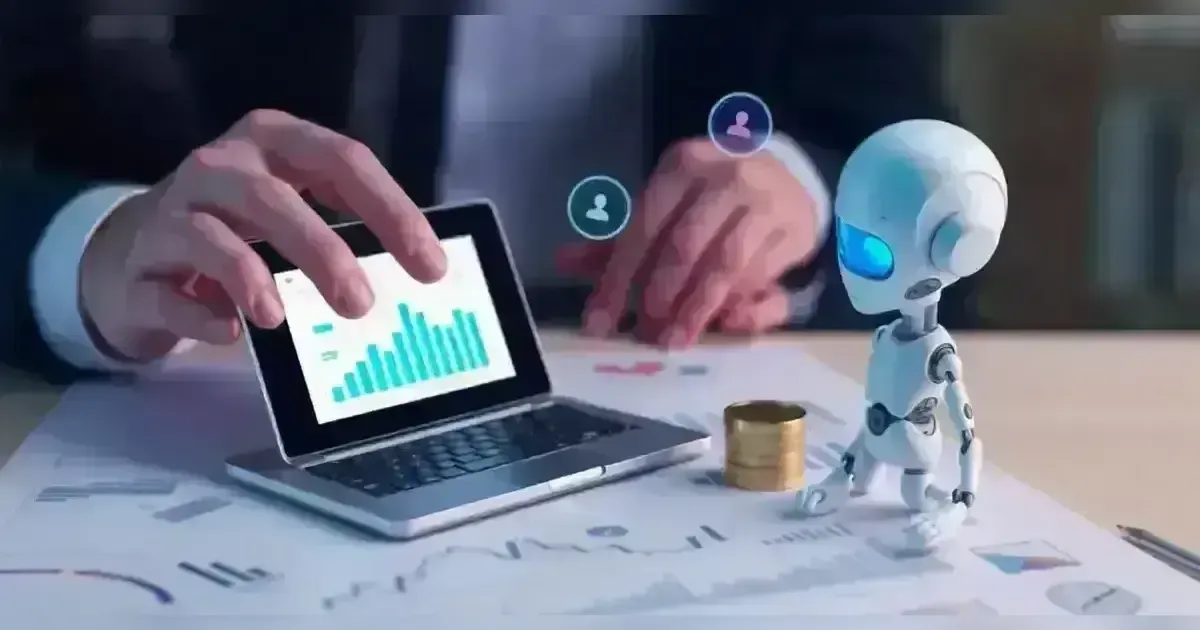The rise of e-commerce has revolutionized retail, reshaping consumer behavior and forcing traditional stores to adapt. With online shopping offering convenience, variety, and personalization, brick-and-mortar retailers now focus on omnichannel strategies, unique in-store experiences, and enhanced digital presence to stay competitive in the evolving retail landscape.
Introduction
The industry of retail has gone through a significant change process in the last couple of decades mainly because of the emergence of electronic commerce. The global e-commerce sector which began as a limited sector of selling books and electronics online has grown into a trillion-dollar industry that is changing the way consumers purchase goods and services, businesses compete and operate, and nations' economies function. Even now, retailers are struggling to adjust to the ease, availability, and range of online shopping sources where consumers now expect the best of everything. However, rather than upsetting the Apple cart of traditional retail, e-commerce has only pushed it into new and interesting corners.
This paper aims to highlight the numerous impacts of e-commerce on traditional retailing, including changing customer behavior and the emergence of various tactics in how physical stores are trying to compete. Currently, we have seen traditional retailers such as omnichannel retailing, stressing in-store experience, and use of analytics for business change. But, strategically, have they considered how they have continued to be significant in the face of this e-commerce monster? This part presents an analysis of this evolution and it is now time to get deeper into this.
The Rise of E-Commerce: A Brief Overview
The application of e-commerce can be credited back to the early 1990s when Amazon and eBay started conducting business on the Internet. In the past decades, this area has received increased attention due to additional technological development, the availability of smartphones, and the flexibility of e-commerce transactions. Thanks to a continuously growing use of social media and influencer marketing, as well as easily accessible payment gateways, this growth has only been multiplied. Currently, worldwide e-commerce is expected to grow to $6 trillion by 2023, which means that e-commerce is a part of the economy.
Changing Consumer Behavior: Convenience Is King
Another worthwhile observation about the reformation caused by e-commerce is the alteration of the main purchase motive to convenience. To this point, consumers have come to expect one-click shopping that allows them to shop at any time of the day from the comfort of their own homes. They no longer have to use cars to move to stores, look for specific clothes, and spend hours waiting for their turn. This increased convenience has reshaped expectations, with online shopping offerings:
- 24/7 Accessibility: Shoppers can browse and purchase at any time, a feature that traditional stores can’t compete with unless they also move online.
- Broader Selection: E-commerce platforms allow for a wider selection of products, even from international markets, which can be harder to find in physical stores.
- Speed and Ease of Comparison: Consumers can easily compare prices, reviews, and products across multiple websites within minutes.
As a result, traditional retailers have had to reevaluate their strategies, adjusting to consumers who expect a fast, personalized, and convenient shopping experience.
Price Comparison and Value-Driven Shopping
This situation is one of the biggest troubles for most traditional retailers, namely the fact that it is alarmingly simple to compare prices over the Internet. Consumers don’t have to go from store to store to look for the cheapest price anymore, they can do it on the internet or the application. This has added an even greater focus on achieving optimal value for a given price, which is important to the shopping experience. Physical retailers, due to quality pressures, reduced their ability to compete and thus resorted to extending more offers, coupons, and loyalty cards. The issue is that many of these retailers face challenges from these markets due to their inability to offer a similar price point as theirs because of their leaner overhead expenses.
The Advantages of the New Economy Commerce
E-commerce is one of the industries that have made convenience in retail has a new meaning in the market. It empowers consumers to buy anything, literally, be it on their phones while on a bus, on a couch at home, or in bed. Thus, free shipping along with fast delivery and a simple return policy contributes to the shifting of customers’ expectations.
This has meant that for physical stores, especially shops the mobile app has led to a reduction in the number of people visiting their stores. Why should the consumer go to a store when he or she is aware that he or she can order the same products on the internet and have them brought to him or her within days, or even a few hours?
Personalized Shopping Experiences
Social commerce has also, however, innovated personalized shopping through e-commerce platforms. Using data analytics, online retailers give out product recommendations, emails, and ads based on the history of a client’s browser and his/her purchase history. This leads to a highly personalized level of shopping experience that works to impact consumer’s emotions and make them feel valued.
However, the G2C format is still inadequate in this regard, although the traditional retail sector has been slow to adopt this format now it is rapidly improving. Today, most stores are equipped with CRM, loyalty card programs, or applications to collect information and provide customized service. Currently, in-store associates get to work with customer data, which enables them to make suggestions based on past actions.
How to Combine Physical and Digital Activities
Since e-commerce emerged, traditional consumers have adapted to the market shift and have integrated the use of an omnichannel retail strategy. It combines both the web and catalogue shopping interfaces therefore enabling customers to engage with a certain brand without any hitches. Buy online, pick up in-store (BOPIS) is one of the most used techniques of omnichannel retailing meaning that customers can purchase a product online and later collect it from a store. Some of the other characteristics include tools for real-time product availability information, store return programs for internet-bought goods, and applications that link up the store experience with online accounts.
Through omnichannel retailing, physical store retailers can create an online store to appeal to online shoppers without leaving the feel of a physical store to those customers who prefer shopping physically.
The Shift Toward Experiential Retail
As a result of reduced foot traffic, the brick-and-mortar players have had to recalibrate their approach to traffic generation. One of the best ways to achieve this is through what we call experiential retail where a customer gets an extraordinary experience they cannot get from an online store.
Some of the retailers are not only using the stores to sell the products but they are also using them in a different capacity. Instead, they are repositioning them to become places where consumers can interact with products and not only. Item demonstration solutions where buyers will have to tinker with products before purchasing them. Any kind of sales promotions that involve providing the customers with product demonstrations or taking them through a class on the products being sold. Brand-related activities that encourage individuals to stay together as one group. Brick-and-mortar stores have had to rethink their strategies to draw people in. One of the most effective ways to do this is by focusing on experiential retail—creating unique, memorable in-store experiences that can’t be replicated online.
Some retailers are using their stores as more than just a place to purchase goods. Instead, they’re transforming them into destinations where consumers can engage with products in meaningful ways. This can include:
• Interactive displays that let customers test products before buying.
• Product demonstrations or classes that educate customers about the items being sold.
• Events or workshops that create a sense of community around a brand.
That is why such activities coordinate clients with the brand and contribute to the development of customer loyalty among coffee shops and their guests.
The Effects of Supply Chain Integration on Inventory Control
E-commerce has also electronically transformed the traditional ways of storing inventories both in virtual and real businesses. Computerized communication offers online stationery retailers especially those who adopt just-in-time inventory stock levels of stock as it is possible to monitor the stock condition in real time. This helps avoid putting up large figures as physical inventories and considerably minimizes overstocking.
For traditional retailers who had poor inventory control systems, the emergence of e-commerce has given the push to inventory control systems. Virtual supply chain information: Inventory availability, for example, can be checked online in real-time and may be chosen as a service by many physical stores. This not only serves the purpose of enhancing the satisfaction of the customers but also avoids the lost sales resulting from out-of-stock of a particular item.
Enhanced Digital Presence for Brick-and-Mortar Retailers
Traditional retailers have had to strive to increase their capabilities as an outcome of increased e-commerce capabilities. This includes making friendly looks and easy-to-navigate websites, website cellular phones friendly, and blazes.
To a greater extent, traditional shopping must realize that their online store is part and parcel of the physical stores. A lot have embraced web advertising, online marketing or keyword optimization, and social media marketing to attract online traffic besides promoting the physical storefront.
Options for Click and Collect
BOPIS or buy online, pick up in-store has emerged as the leading method for getting established offline retailers into the multi-location online business space. Consumers appreciate the comfort of getting delivery online with the addition of details pick up from the store thereby avoiding extra dollars on shipping or waiting time.
This service also increases additional store traffic, wherein retailers can ingratiate complementary sales pitches to consumers while they collect their online purchases.
The Use of Technology in a Store
Tech in stores: Today, most retailers are incorporating technology into stores. By using technology solutions, such as digital kiosks, a smartphone app, and digital, interactive displays highlighting product attributes and allowing price comparisons, as well as reviewing comments from others who have purchased similar products, customers no longer need to leave the store to gather the information needed.
Also, the application of augmented reality and virtual reality models is increasing. For instance, home improvement stores can use AR techniques which gives the customer an idea of how furniture may look like on their home before they can be purchased.
Focusing on Exceptional Customer Service
There is still another aspect where both traditional retail stores have an edge over e-tail, and that is customer service. An actual retail store is a physical store where customers receive professional help from store clerks, and get explanations and suggestions.
Experiences and touching and feelings that are unique and personal have become key because consumers are unwilling to have a faceless experience with a company. Clients feel welcomed, and they remember the experience so they would come over again and again to do business with your organization.
Maximizing Data Analytics and Customer Understanding
Traditional retailers realizing that e-commerce companies rely heavily on customer data for product recommendations, are following the same path once again. Through the analyzation of data generated by loyalty programs, the integrated point-of-sale systems as well online user interactions they can obtain information concerning the customers’ behavior, their preferences, and the purchase cycle.
Marketing departments find this information useful to shape their marketing activities, help stock management, and plan the personalized customer experience, which will in turn improve sales results.
Major issues affecting traditional retail business in the online trading environment
Despite their efforts to adapt, traditional retailers face significant challenges in the e-commerce-dominated world:
• Competition from pure-play online retailers: The online-only businesses have less overhead costs and can thus set their prices lower, and are more flexible.
• Logistics and delivery challenges: Still a challenge for many store-based retailers is to provide fast and guaranteed delivery comparable to e-business.
• Maintaining a relevant in-store experience: As a growing number of customers migrate to online purchases, the stores themselves are forced to offer the customer an incentive to shop physically.
Conclusion
It would not be wrong to propose that the emergence of e-commerce has dramatically changed the environment for retailing, although traditional stores are far from becoming obsolete. Rather, traditional retailers have to merge their online components, build a deliberate experience within their stores, and prioritize customers’ experiences.
On one hand, there is a level of competitiveness now rife in the market but on the other, it is the key to success, particularly in today’s world of online buying from omni channels to personalized services.


























